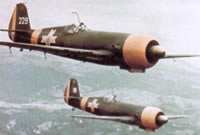
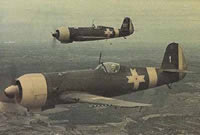
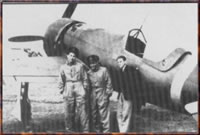

    |
|
|
|
|
|
|
|
|
|
|
|
|
|
|
|
|
|
|
|
The IAR-80 fighter |
|
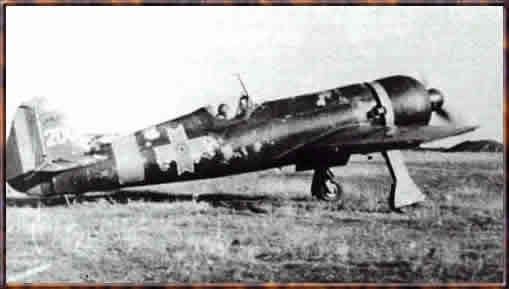
One of the early IAR-80's
|
|
Technical data of the IAR - 80
|
Wingspan
|
10.52 meters
|
|
Length
|
8.9 meters
|
|
Height
|
3.6 meters
|
|
Weight (empty)
|
2045 kg
|
|
Weight (loaded)
|
2483 kg
|
|
Maximum speed at 5000 meters
|
510 km/h
|
|
Climbs to 5000 meters
|
5 minutes and 27 seconds
|
|
Maximum operational ceiling
|
10500 meters
|
|
Range
|
760 km
|
|
Engine
|
IAR K14 II C32 rated at 857 HP ( serial numbers 1 to 20
) IAR K14 III C36 rated at 960 HP ( serial numbers 21 to 50)
|
|
Armament
|
4 FN 7.92 mm machine guns with 500 rounds each
|
|
Numbers produced
|
50
|
|
Serial numbers
|
1-50
|
|
|
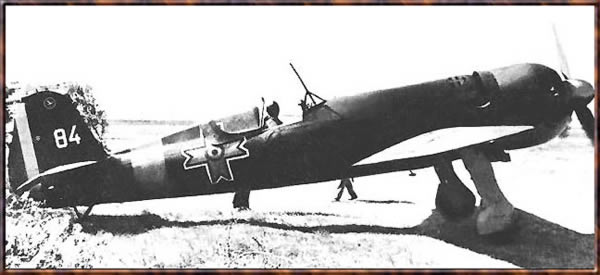
|
The IAR-80A fighter
Technical data of the IAR - 80A
|
Wingspan
|
10.52 meters
|
|
Length
|
8.97 meters
|
|
Height
|
3.525 meters
|
|
Weight (empty)
|
2110 kg
|
|
Weight (loaded)
|
2720 kg
|
|
Maximum speed at 5000 meters
|
506 km/h
|
|
Climbs to 5000 meters
|
5 minutes and 50 sec.
|
|
Maximum operational ceiling
|
10500 meters
|
|
Range
|
730 km
|
|
Engine
|
IAR K14 C32 1000A1 rated at 1025 HP
|
|
Armament
|
6 FN 7.92 mm machine guns with 500 rounds each
|
|
Numbers produced
|
90
|
|
Serial numbers
|
51-90 ; 106-150 ; 175-180
|
|
||||
| This number also includes 20 airplanes that were supposed to be delivered as IAR-81A fighter-bombers, but were completed as fighters instead ( the latter ones could also carry a 50 kg ( 220 lb) bomb or a 100 liters ( 26.4 gallons ) drop tank under the fuselage, thus increasing their range of action. |
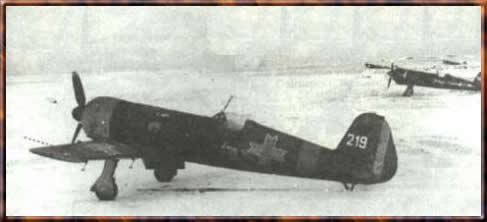 |
|||
|
||||
Technical data of the IAR - 80B
|
Wingspan
|
11 meters
|
|
Length
|
8.97 meters
|
|
Height
|
3.525 meters
|
|
Weight (empty)
|
2135 kg
|
|
Weight (loaded)
|
2810 kg
|
|
Maximum speed at 5000 meters
|
506 km/h
|
|
Climbs to 5000 meters
|
6 minutes and 30 seconds
|
|
Maximum operational ceiling
|
10000 meters
|
|
Range
|
730 km or 1030 km ( with the external fuel tank )
|
|
Engine
|
IAR K14 C32 1000A1 rated at 1025 HP
|
|
Armament
|
4 FN 7.92 mm machine guns plus 2 FN 13.2 mm machine
guns
|
|
Numbers produced
|
50
|
|
Serial numbers
|
181-200 ; 201-230
|